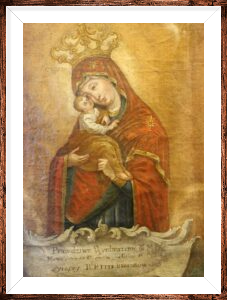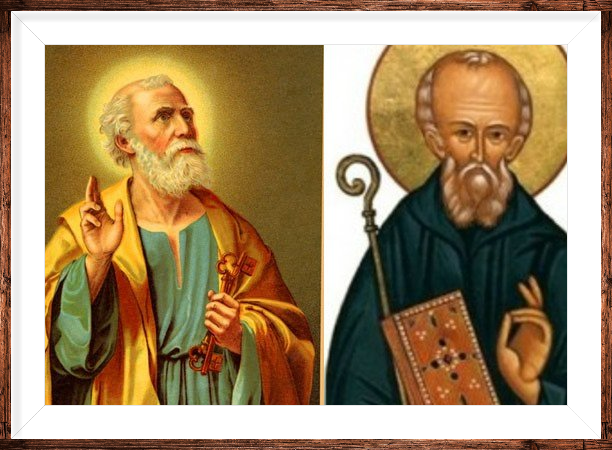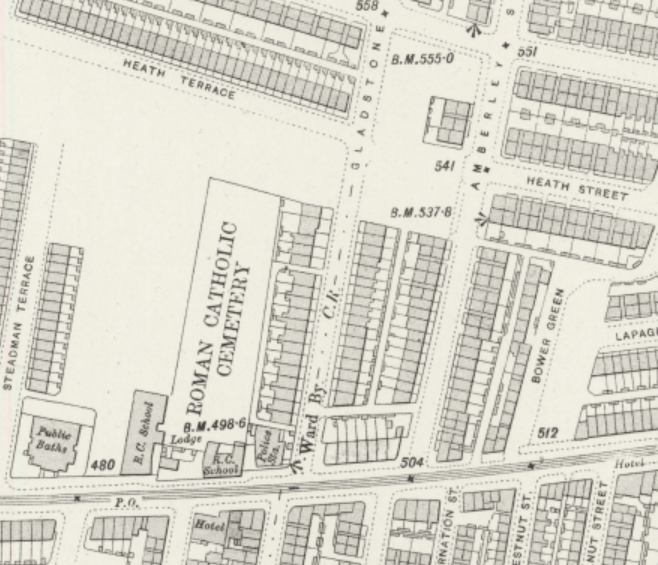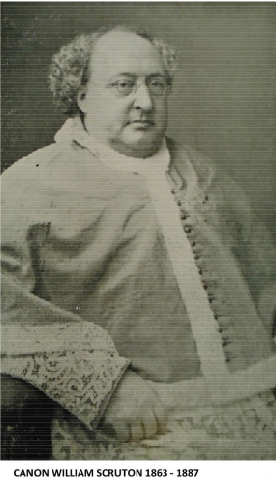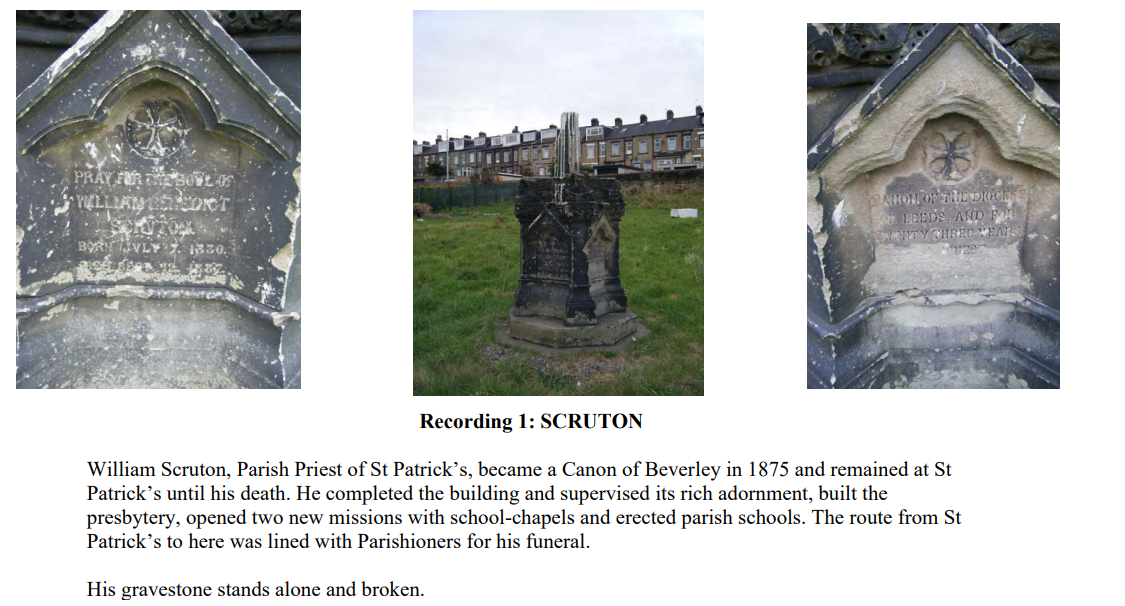Leeds Road (Irish ) Catholic Cemetery
Previously to this cemetery, there was one located next to the Old St Mary’s Chapel, Stott Hill. When Old St Mary’s closed in 1876, this area was incorporated into the playground when the school was built on the site of the old chapel.
Leeds Road Cemetery began in August 1851 when land was bought by the following Trustees. Henry Westwood (Butcher), Valentine Rochfort (Hatter), George Anderson (Grocer) and Ambrose Scully (Ironmonger).
A planning application was made to Bradford Council in September 1851 and permission was granted to build a Sexton’s House. This can be seen on the map where it is indicated by the ‘lodge’.
The Bradford Observer published on the 7th August 1851, reports that the cemetery was consecrated on the 1st August 1851. The consecration was performed by the Right Reverend Bishop of Beverley, John Briggs, (The Diocese of Leeds did not come into existence until 1878). The Bishop was assisted by the Revds., T. Harrison, J. Rigby, T. Lynch, and M, Drea, and the four resident priests of Bradford Mission, the Revds. R. Browne, M. Kavanagh, M. O’Donnell of Leeds, the Rev T. Walsh of Keighley and the Rev. E O’Leary of Dewsbury.
The paper reports that on the eve of the ceremony, five large wooded crosses had been erected and at the base of each of these, wooden stands, holding three candles that would be lit during the ceremony.
The ceremony itself commenced at 10am when the Bishop arrived by carriage, already vested in white cope and mitre, with crozier, and attendant priests. They then proceeded to middle of the ground. The Bishop addressed the gathering crowd, which was estimated to be 3,000 persons, and reminded those gathered that the Church had blessings for her children throughout every step of life, and that it was only expected that she should bless, and consecrate places set aside for burial.
The Bishop, explained that the five wooden crosses that had been erected were a reminder of the five wounds inflicted upon Jesus at his crucifixion, and those buried there might sleep in security beneath the shadow of the cross, awaiting the day of resurrection. After the address, the Bishop, along with clergy and faithful, knelt in prayer, and the litanies of the saints were sung. After this the Bishop processed round the entire cemetery and sprinkled the ground with holy water, after which the Penitential Psalms were sung. The Bishop gave his solemn benediction, and all knelt to receive it. The ceremony concluded at about midday.
The original entrance to the cemetery was on Leeds Road, between St Peter’s School and the lodge. In 1905 road widening affected the school and access. The old school as demolished and the present-day school built in its place. Today, access is only possible via a side entrance on Gladstone Street. It is known as the Irish Cemetery due to the large amount of Irish and their descendants buried there.
The first burial at Leeds Road Cemetery was that of Patrick Launders of Annison Street, who died on the 1st January 1856 and buried on the 6th January 1856 aged 11 years. The final burial took place on the 10th June 1907, of Elizabeth Anna Bray of Leeds, who died on the 8th June 1907.
One of the more prominent burials was that of Canon William Scruton of St Patricks Church Westgate. He died on the 12th September 1887 and buried on the 15th September 1887. It was reported at the time of his funeral that people lined the streets of Bradford, from St Patricks Westgate to the cemetery to pay their respects. His monument can still be seen in the cemetery today, but in a very poor state.
Another prominent memorial that is still visible today is that of Francis Falkingham from Bowling Back Lane Bradford. Francis, along with his brothers were gymnasts, and whilst swimming in the Birmingham Canal near Herbert’s Park, Darlaston, Birmingham, he got into difficulty rescuing one of their pupils, Henry McGough aged 10 years. Both had entered the water, when Henry suddenly got out of his depth and Francis immediately went to help the boy. It is reported that Francis helped the boy onto his shoulders, and began to sink in 14 feet of water, and was prevented from swimming by the tight clasp of the boy and both drowned. Both died on the 3rd June 1863 and were buried with each other, along with Francis’ mother who had died in 1856.
Irish National, John Donoghue, died on the 19th July 1876, aged 61 years, and was buried on the 25th July 1876. The Flag of Ireland Paper, dated 29th July 1876 reports that John, who was a native of Mullagh, County Cavan, had spent the last 40 years living in England (principally in Bradford) and that both his language and act were racy of the soil that gave him birth. Though out his life, the paper reports that he was most active in every effort to alleviate the sufferings and the independence of his native land, and living in England, made him only the more determined.
His sons, Daniel and James, had made arrangements for his remains to be taken to back to his native parish in Mullagh, but they yielded to the numerous associates and friends, and to have him buried in Bradford. The newspaper reports that over 400 of his countrymen attended his funeral. His solid oak coffin, with rich metal mounting, was borne on the shoulders of his fellow countrymen in an orderly fashion and laid to rest.
Other Irish faithful include Terence Quinn and his wife Mary (Nee Hudson). They were married at St. Martin's Church, Kilworth, County Cork, on the 29th January 1842. Terence was a stonemason and arrived in Bradford in the late 1860's, along with his wife and 9 children. No doubt he came to work on the many buildings that were being built, such as the Town Hall. Mary died on the 21st July 1872 at Wild Boar Street, aged 45 years, and was buried in the cemetery on the 24th July. Their son James, who was a worsted spinner, died on the 4th June 1877, at Ripon Street, aged 22 years, and was buried on the 7th June. Terence died on the 24th July 1887 at Mulberry Street, aged 62 years, and was buried on the 27th July.
One of Terence and Mary's daughters, Ellen, married Peter Joyce at the old St. Marys Church, Scott Hill, on the 29th June 1872. Peter was from Fermoy, County Cork, some 4.5 miles away from Kilworth. Peter arrived in Bradford in about 1865, along with his first wife Anne, and their 4 children. They did have another child, Honora, who was born in Bradford in 1867. Sadly , Anne died at the Union Workhouse, Horton, on the 28th May 1868, aged 29 years, and was buried on the 31st May.
Peter as a widower, and also a stonemason, would require someone to care for the young children. Peter and Ellen, went on to have a further 8 children; Catherine, John, William, Thomas, Margaret, Charles, Henry and Joseph. Catherine died on the 18th August 1874,aged 1 year and was buried in the cemetery on the 16th August. Thomas died on the 12th October 1877, aged 6 months, and was buried in the cemetery on the 14th October 1877. Peter died on the 8th June 1887, aged 45, and was buried on the 11th June. Of their remining children, John died aged 16 in 1891 and was buried in a company grave at Undercliffe Cemetery. Charles died on the 29th August 1880 aged 8 months and was also buried in a company grave at Undercliffe Cemetery.
Ellen died on the 8th October 1922, aged 78 years, at Nuttall Road, and was buried at Undercliffe Cemetery. More information about Ellen's life can be found by clicking the following link. https://www.undercliffecemetery.co.uk/about/history/ellen-joyce/
It is estimated that there are approximately 7,000 people buried in this cemetery.
Many thanks to Bradford Through the Lens for producing such a fantastic video (see below) and to our very own Andy Joyce for the narration. Andy has done extensive research about this hidden ‘little gem’ of Bradford and the contribution made by so many Irish and Catholic families in those very early days.
By the tree of remembrance at St Peter's you will find a copy of the burial register where we remember all those who have died and are buried in this cemetery and the one at Stott Hill.
John Briggs - Bishop of Beverley 1850-1860
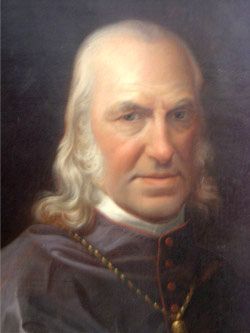
The Grave of Catherine Falkingham, Francis Falkingham and Henry McGough
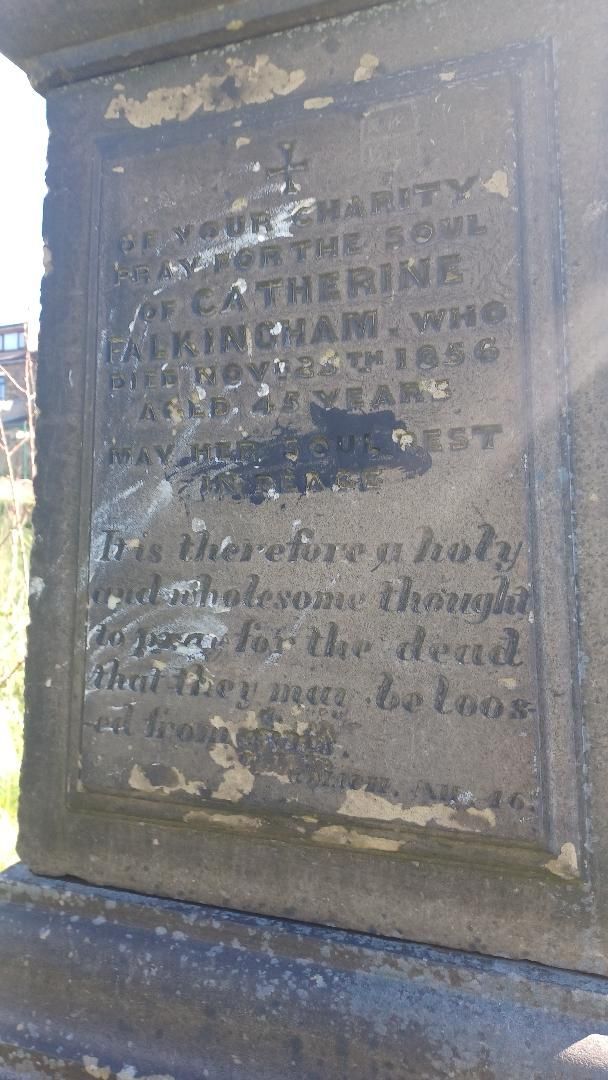
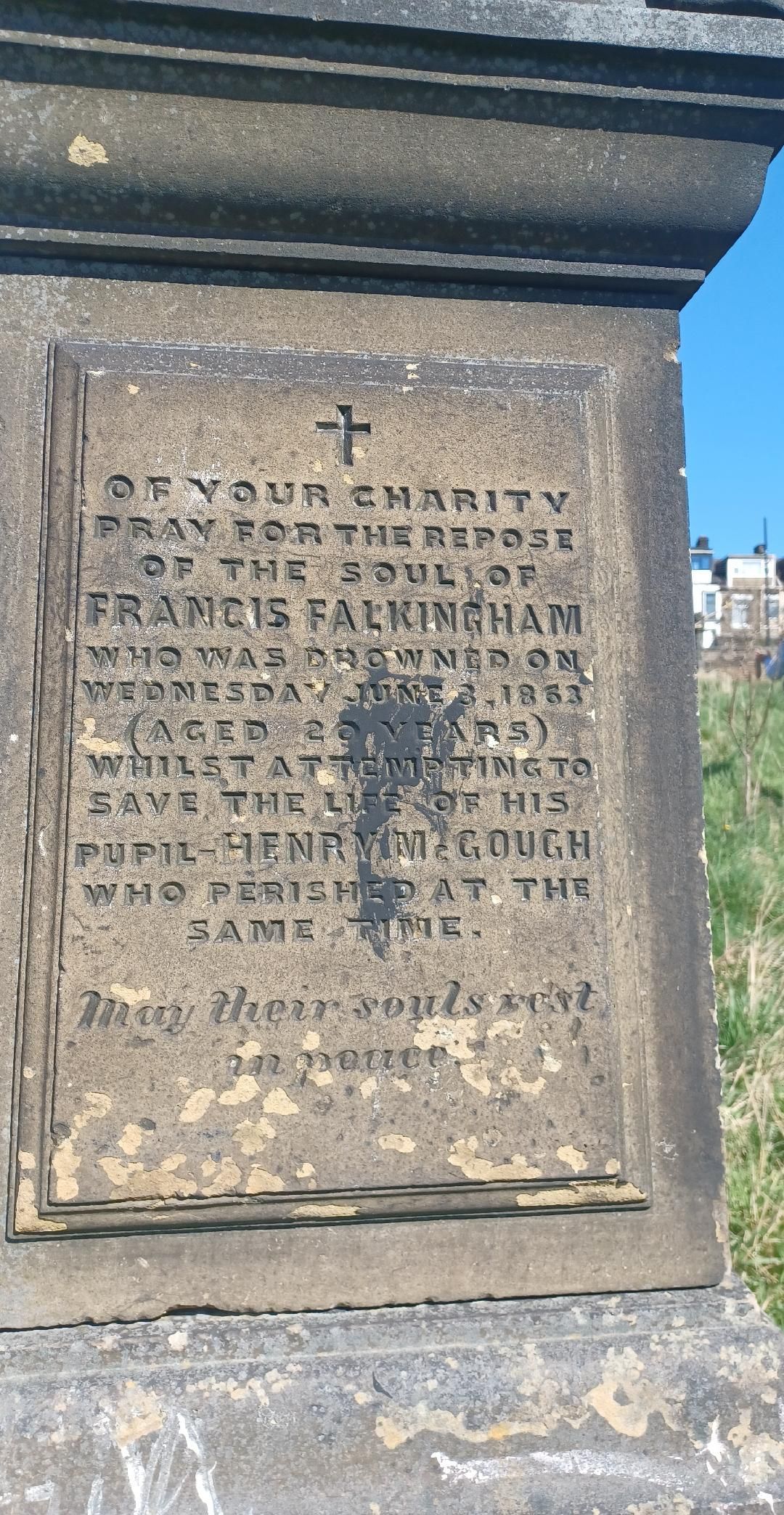
Cemetery Location 1892 and grave of Canon Scruton
